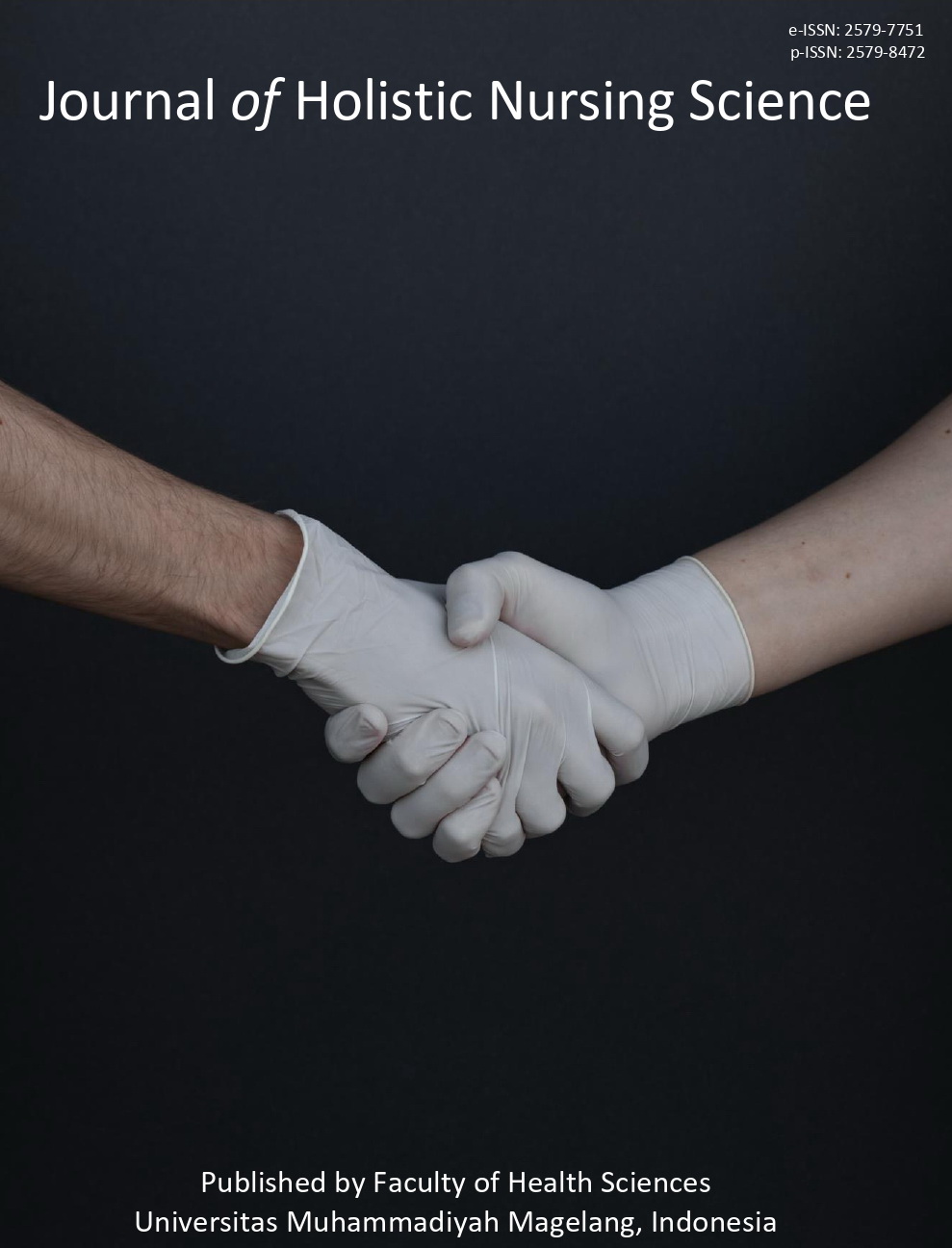A clinical review of estimating the accuracy of nasogastric tube insertion depth
Main Article Content
Abstract
Inserting a nasogastric tube (NGT) is a standard procedure performed by nurses. Assuring the correct position of the tip of the NGT in the stomach is crucial for maximizing the treatment effectiveness and preventing complications due to NGT malposition. While the nose-ear-xiphoid distance is one of the simplest applied methods in estimating the depth of NGT, some studies reported that it is not accurate and is considered no longer safe and increasing the risk for NGT malposition. This literature review aimed to identify the most precise method for determining the NGT insertion depth. The article searched from some electronic sources, namely Sciencedirect and Google Scholar, using "nasogastric tube," "placement," "method," "formula," and "nursing" as the keywords and searching focused on the original research articles published in English between March 2017 – March 2022. Three pieces met the inclusion criteria. These three articles used different definitions and formulas in determining the accurate position of NGT in the stomach. Considering the rate of correct position resulting from the formulas, the xiphoid-ear-nose distance + 10 cm formula was considered the most appropriate formula to be implemented in the daily NGT tube insertion procedure. However, using this formula cannot altogether remove the risk of malposition. Therefore, confirming the position of the NGT using a gastric aspirate pH test or chest x-ray is very recommended.
Keywords: Nursing intervention; nutritional status; nasogastric tube; clinical practice; nursing care
Downloads
Article Details

This work is licensed under a Creative Commons Attribution-NonCommercial 4.0 International License.
Authors who publish their articles in JHNS retain full copyright of their work. JHNS does not require authors to transfer their copyright to the journal or Universitas Muhammadiyah Magelang as the publisher. The authors grant JHNS a license for the first publication.
